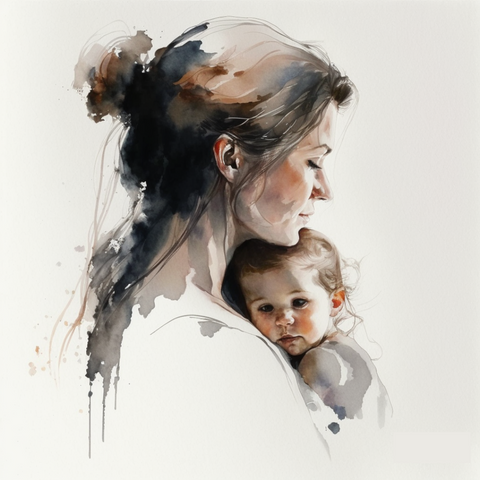How Pregnancy and Postpartum Transform a Woman's Breasts
Embarking on the miraculous journey of motherhood is a beautiful and transformative experience, with many physical and emotional changes. One of the most noticeable shifts occurs in a woman's breasts, as they prepare to nurture and nourish new life. Whether you're an expectant mother or simply curious about the incredible ways a woman's body adapts during pregnancy and postpartum, this friendly guide will walk you through each stage of this remarkable process.

First Trimester: The Tender Beginning
As the thrilling journey of motherhood begins, many expectant mothers notice some of the earliest physical changes in their breasts. During the first trimester, hormonal shifts, particularly in estrogen and progesterone, set the stage for breast growth. These hormones stimulate the mammary glands to prepare for milk production, often causing increased tenderness and sensitivity. For some, the areolas – the darker skin surrounding the nipples – may also become larger and darker.
Second Trimester: An Abundance of Change
Moving into the second trimester, a mother's breasts will continue to undergo transformations. The milk-producing structures in the breast begin to develop, and breast tissue becomes denser as it fills with ducts and lobules. These changes may cause the breasts to feel heavier or fuller. As the body adapts to accommodate the growing fetus, a mother may notice her breasts increasing in size, sometimes even by a full cup or more.
Third Trimester: The Countdown to Motherhood
As the third trimester unfolds, the breasts are primed for nursing. The Montgomery glands – small, oil-producing glands on the areolas – become more prominent, secreting a lubricant that helps protect the skin during breastfeeding. Some women may also notice a yellowish, thick fluid called colostrum, the "first milk," leaking from their nipples. This nutrient-rich substance will be the newborn's initial sustenance after birth.

Postpartum: The Miracle of Milk
Following childbirth, the breasts enter a dynamic stage as they transition to lactation. Prolactin, the hormone responsible for milk production, is released in response to the baby's suckling. Within a few days, the colostrum will be replaced by mature breast milk, which is thinner and more abundant. During this period, it is not uncommon for breasts to feel engorged, swollen, or even painful as the milk supply adjusts to the baby's needs.
Breastfeeding: A Bonding Experience
Breastfeeding not only provides essential nourishment for the infant but also fosters a unique bond between mother and child. The act of nursing triggers the release of oxytocin, the "love hormone," which promotes feelings of relaxation, attachment, and affection. This intimate connection can serve as a source of comfort and support throughout the challenges of new motherhood.
Weaning: The Gradual Goodbye
When the time comes to wean the baby from the breast, the process should ideally be gradual and gentle. As the frequency of nursing decreases, the breasts will produce less milk, eventually returning to their non-lactating state. It is important to note that the breast tissue may not revert precisely to its pre-pregnancy size or shape, and some mothers may experience temporary tenderness or discomfort during this transition.
A New Chapter: Embracing the Transformation
Throughout pregnancy and postpartum, a woman's body undergoes remarkable changes, particularly in her breasts. These transformations are a testament to the power and resilience of motherhood, and they should be embraced with pride. As expecting mothers prepare for the adventure ahead, it is essential to remember that each journey is unique, and the bond that blossoms between mother and child will be a source of strength and love that endures a lifetime
